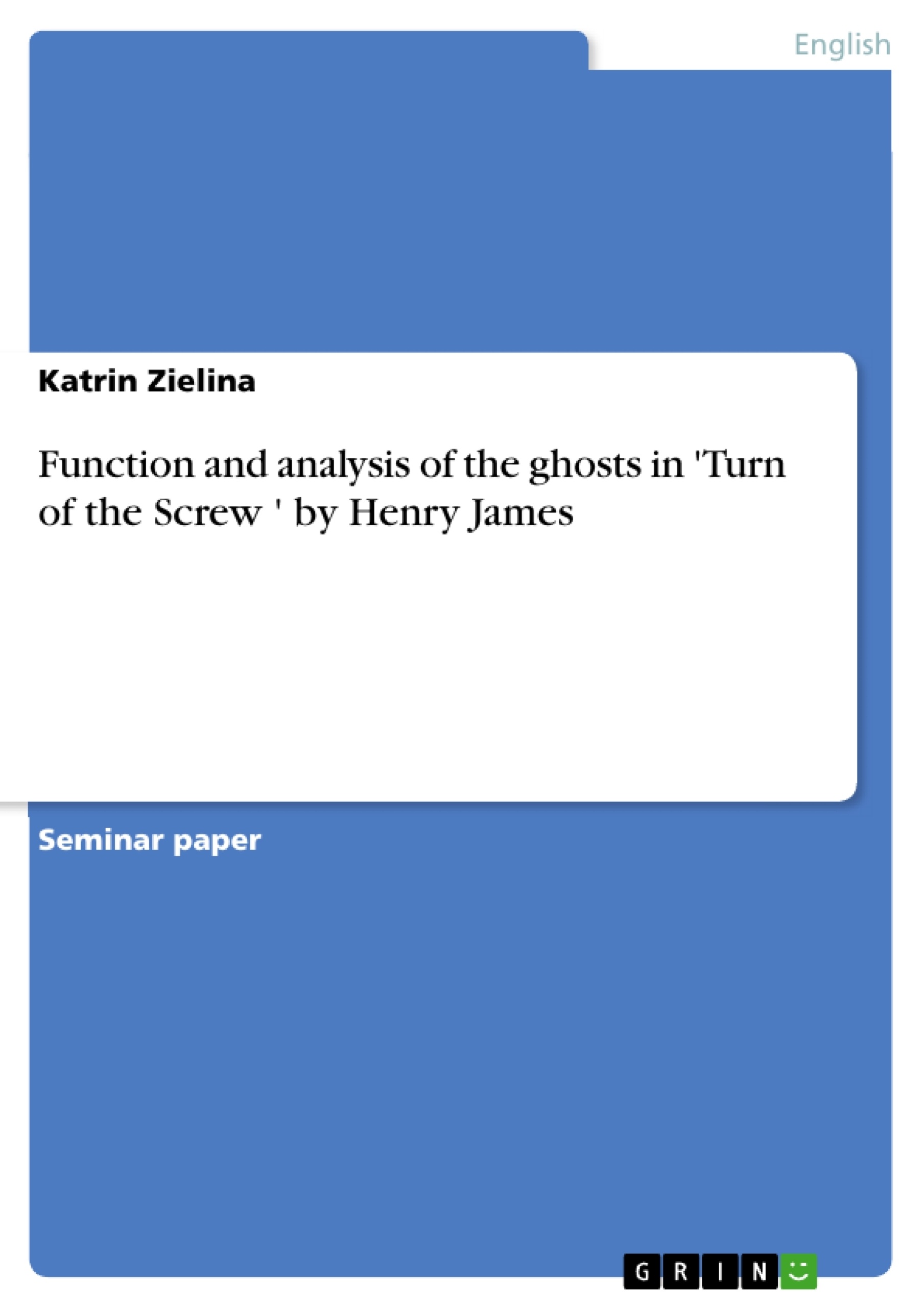Henry James′s "The Turn Of The Screw" has been often interpreted since it was first published in 1898. There are a lot of hints in the story, but those hints are rarely stated directly. So the difficulty in reading and judging the story in one certain way makes it even more challenging to read.
Until today critics have not come to an agreement whether Miles and Flora or only the governess are haunted by the ghosts. So one might pose the question "When do critics ever share the same opinion?". After all there are always different people with different opinions who read one and the same story completely different at all. But nevertheless every author has a certain intention, the purpose to convey a message by writing the story down. Possibly the openness to various interpretations is the point of the novel. Basically this is what every reader should have in mind.
Many questions move critics concerning "The Turn Of The Screw", e. g. "What does the governess really see while her encounters with those apparitions?", "How can she describe the dead Peter Quint that detailed without ever having seen him before?" and -most essentially- "How did Miles come to death in the end?". Every question itself is interesting enough, but I find the question most exciting, what the ghosts represent if they are no real supernatural apparitions. It seems to be clear that only the governess is able to see the ghosts. As far as I remember there is no single hint that is evidenced clearly in the whole story that Mrs. Grose or the children are also able to recognize the ghosts. So possibly only the governess is haunted by the apparitions for reasons that have to be analyzed more deeply.
Table of Contents
- Introduction
- Analysis
- Function of the ghosts in Marxist Criticism
- Discussion of Marxist Criticism
- Function of the ghosts in Psychoanalytic Criticism
- Discussion of Psychoanalytic Criticism
- Function of the ghosts in Marxist Criticism
- Final Summary
- Personal statement
- Conclusion
Objectives and Key Themes
This essay aims to analyze the function of the ghosts in Henry James's "The Turn of the Screw" by examining different critical perspectives, particularly Marxist and Psychoanalytic Criticism.
- The role of social class and power dynamics in shaping the governess's perception of the ghosts.
- The governess's psychological state and its influence on her interpretation of events.
- The ambiguity and multiplicity of interpretations surrounding the ghosts' presence and the nature of the haunting.
- The exploration of Victorian social norms and their impact on the governess's experiences.
- The use of literary techniques, such as unreliable narration and symbolism, to enhance the mystery and complexity of the story.
Chapter Summaries
The Introduction establishes the context and background of "The Turn of the Screw," highlighting the ambiguity and open-ended nature of the narrative. The author introduces the key questions raised by the story, focusing on the nature of the ghosts and their significance. The essay then delves into the Marxist Criticism perspective, analyzing the social class differences between the governess, the master, and the servants, highlighting how these dynamics contribute to the governess's perceptions and actions. Specifically, the author explores how the governess's desire for social mobility and her yearning for acceptance may influence her belief in the ghosts.
Keywords
The essay revolves around key concepts like unreliable narration, Victorian social norms, Marxist Criticism, Psychoanalytic Criticism, social class, power dynamics, and the interpretation of symbols and ambiguity in literature. The analysis focuses on the function of the ghosts as representations of social anxieties, repressed desires, and the governess's psychological state.
- Quote paper
- Katrin Zielina (Author), 2002, Function and analysis of the ghosts in 'Turn of the Screw ' by Henry James, Munich, GRIN Verlag, https://www.grin.com/document/13208




